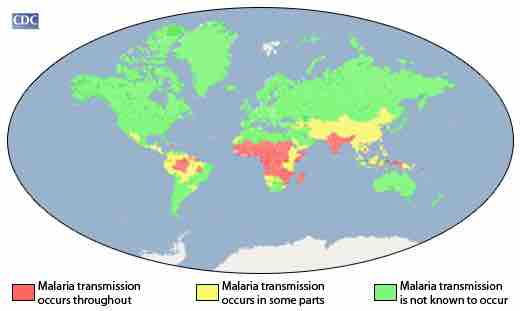Infectious diseases, also known as transmissible diseases or communicable diseases, are clinically evident illnesses resulting from the infection, presence and growth of pathogenic biological agents. Infectious pathogens include some viruses, bacteria, fungi, protozoa, multicellular parasites, and aberrant proteins known as prions. These pathogens are the cause of disease epidemics, in the sense that without the pathogen, no infectious epidemic occurs.
Many infectious diseases that previously killed by the millions were greatly reduced in the 20th century, with the most notable achievement being the eradication of smallpox. Other diseases, such as diphtheria, typhoid fever, tuberculosis and whooping cough were greatly reduced throughout the world due to childhood immunization programs, improved sanitation, and the use of antibiotics. However, some infectious diseases remain a problem today. The top three single agent/disease killers are HIV/AIDS, tuberculosis and malaria.
Malaria
Normally not a problem to North Americans, malaria is the infectious disease most deadly to children worldwide. Said to be one of the world's oldest diseases, malaria is caused by one of four protozoans within the genus Plasmodium. The blood pulled from the bite of an Anopheles mosquito carries this disease, which infects the human or animal host and resides in red blood cells in order to reproduce. Malaria infects 500 million people per year, killing just fewer than 3 million. It is the second leading cause of death in Africa, after HIV/AIDS, and is the fifth leading cause of death from infectious diseases worldwide.
HIV/AIDS
HIV/AIDS was introduced as an infectious disease during the 20th century and deaths due to HIV have increased fourfold since. The first cases were diagnosed in the United States in the early 1980s. This misunderstood illness was originally thought to only exist among four risk groups, better known as the 4Hs: Homosexuals, Haitians, Hemophiliacs and Heroin users. However, as HIV/AIDS has become a pandemic, it is better understood and is known to not just be isoloated to certain groups of people. There are various modes of HIV transmission which include: male to male sexual contact, injection drug use, and heterosexual contact. In some developing countries where antiretroviral drugs are not affordable or readily accessible, mother-to-child transmission still poses a possible risk of infection.

Concentrations of malaria transmission worldwide.
Normally not a problem to North Americans, malaria is the infectious disease most deadly to children worldwide. Said to be one of the world's oldest diseases, malaria is caused by one of four protozoans within the genus Plasmodium.